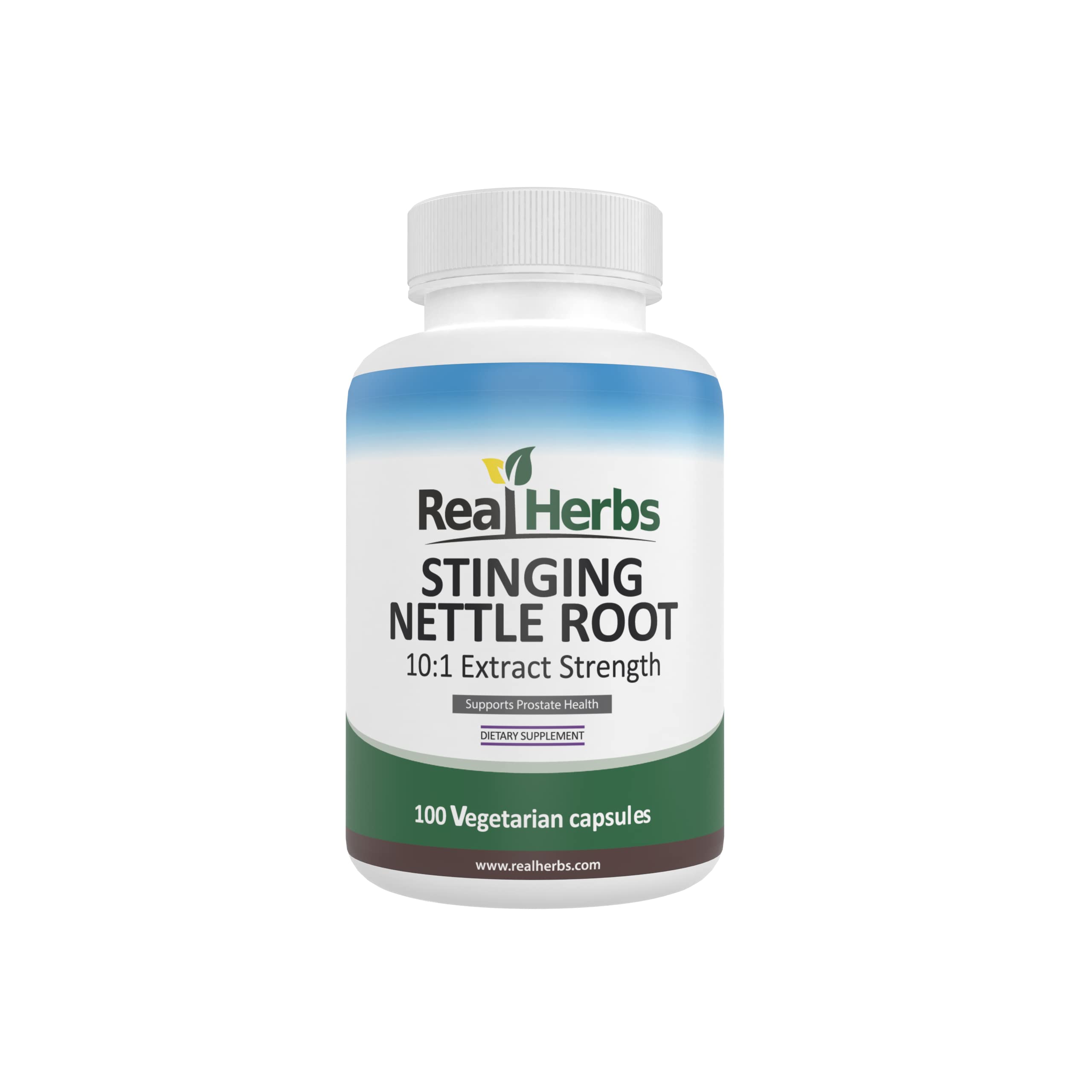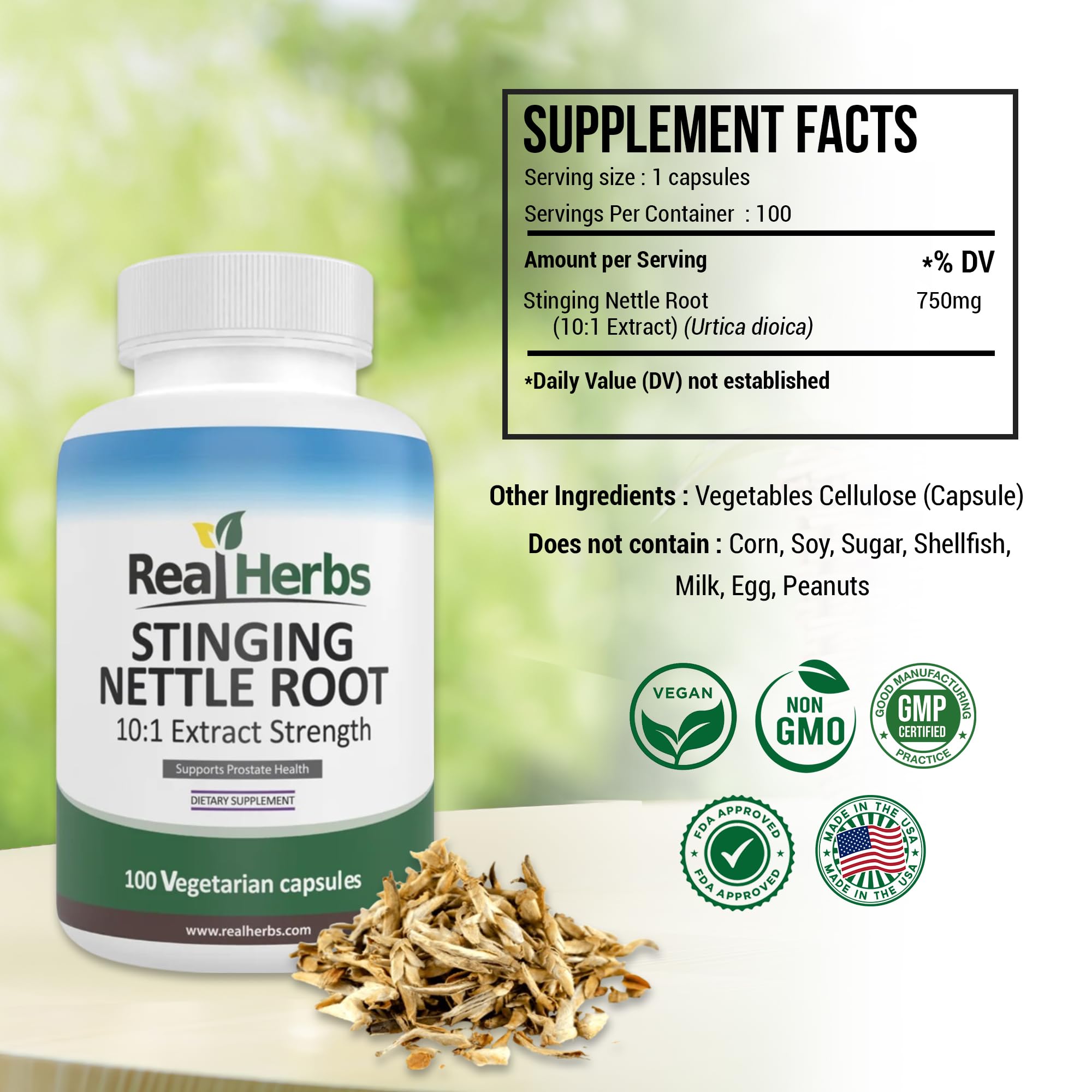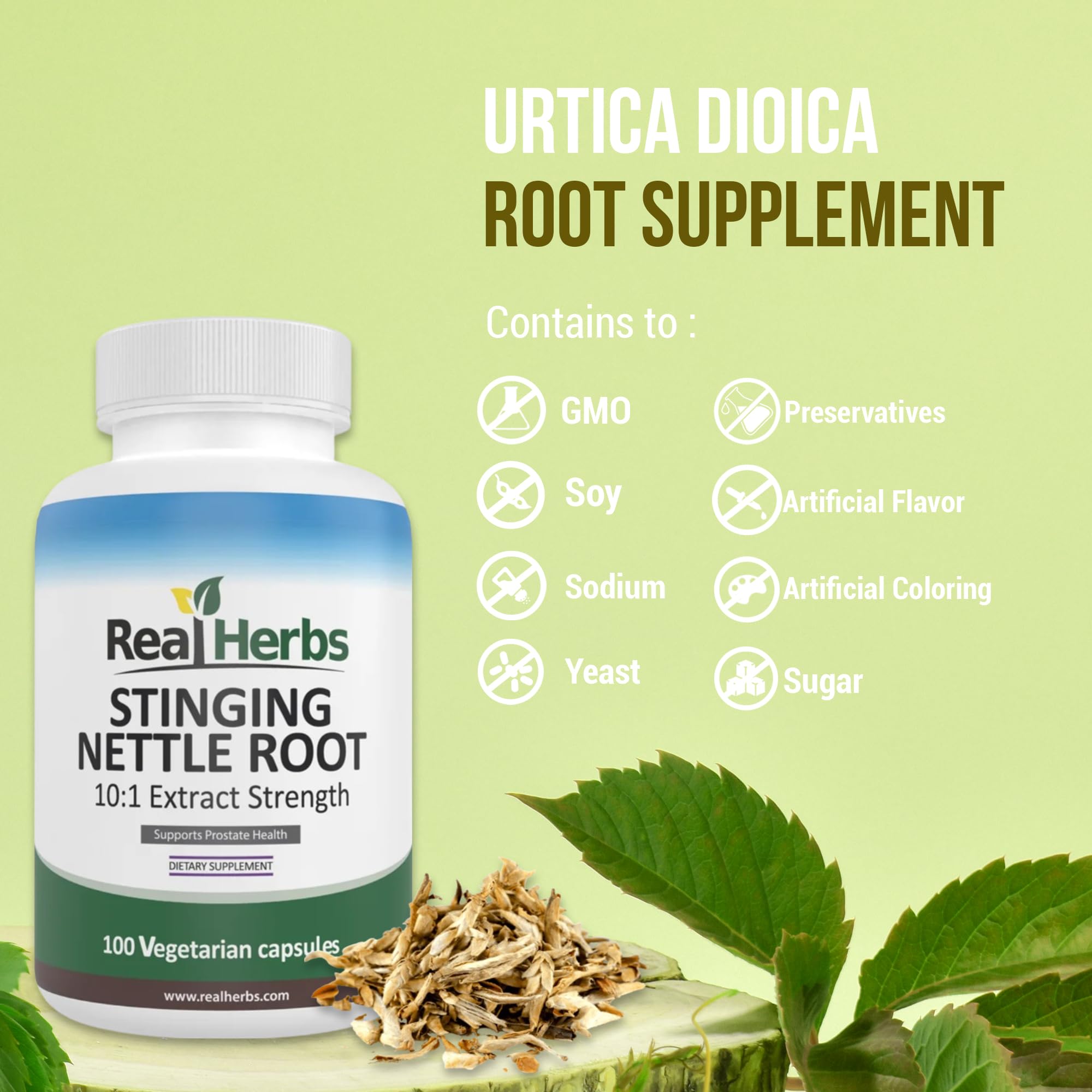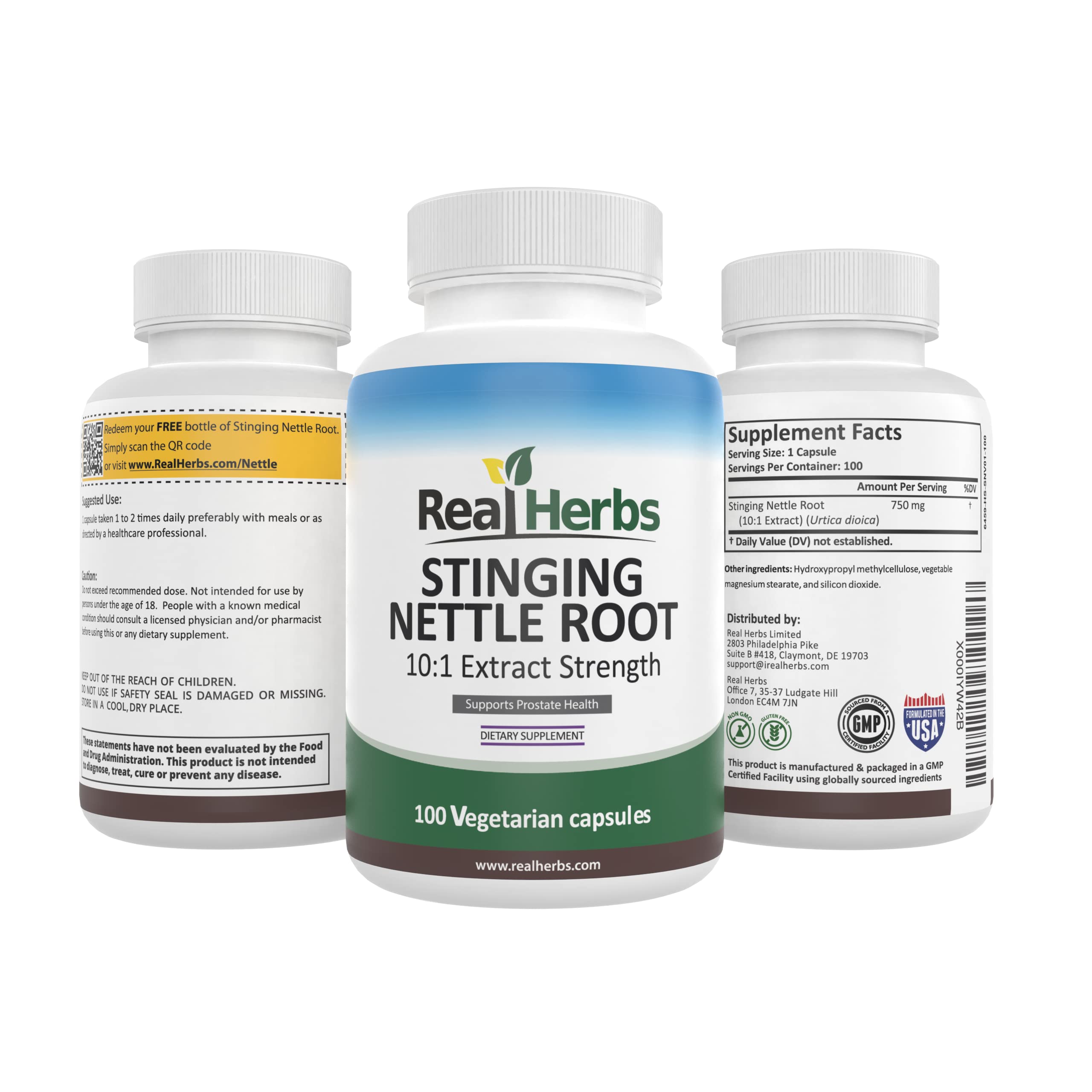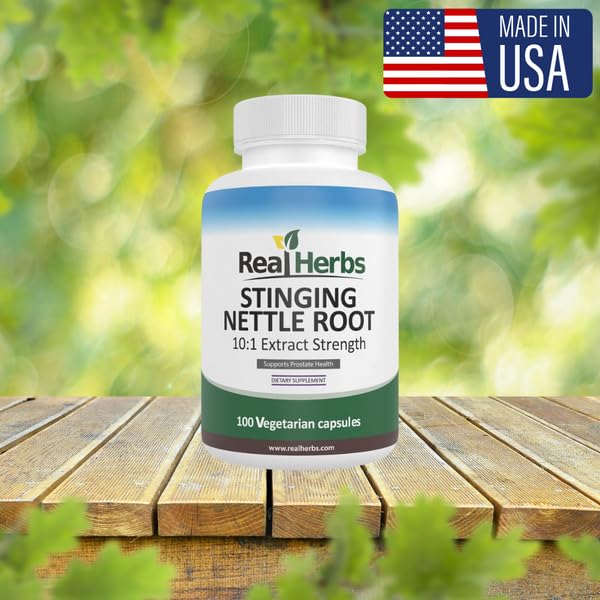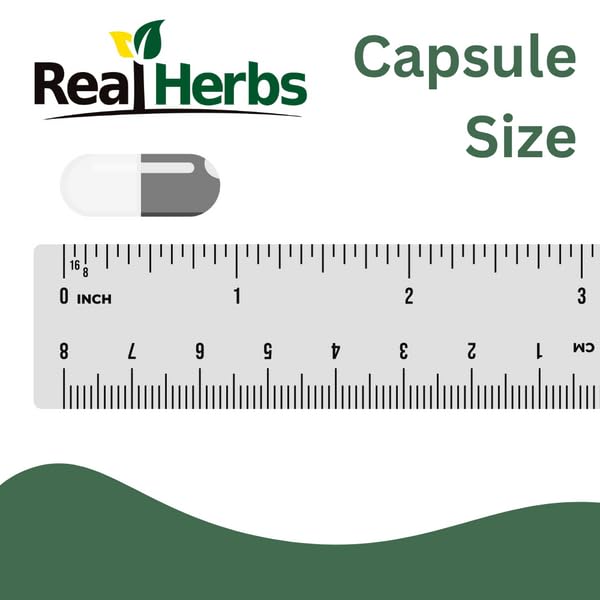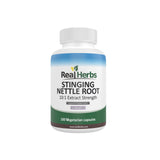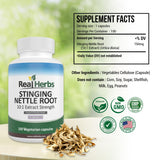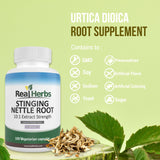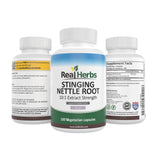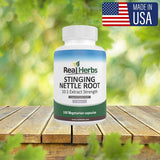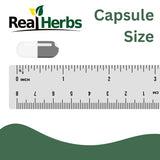Stinging Nettle Root: The Best Antioxidant In The World
A weed that was once used by the Native Americans in North America to treat pain, the stinging nettle (Urtica dioica) is now popularly known as a supplement that has loads of health benefits.
The stinging nettle is a weed, also known as Urtica dioica, that’s popularly used in supplement form for its many health benefits. Because of its versatility and the wide array of nutrients it contains, it can be used for a variety of reasons. The stinging nettle - which earned its name from the fact that it has tiny hairs on its leaves and stems that can cause a sting when touched - was once used by Native Americans to treat pain. Today, research shows that this plant’s health advantages include aiding in improving symptoms from painful conditions like arthritis and gout. What’s more, this potent antioxidant is great for your heart, prostate gland and bladder – among other things.
The plant is believed to have originated in Europe, but it can be found in most parts of the world today.
Stinging nettle root is known to have many health benefits, so it’s no surprise that they are found in most parts of the world today. The plant was believed to be native in Europe, but it can also be found in Asia, Australia and North America.
In North America, stinging nettles have been used as a medicine since the early 20th century. Native Americans used this plant to treat pain and as a diuretic.
The root and leaves of the stinging nettle are known to contain many antioxidants - a substance that can help neutralize free radicals and prevent oxidative damage to cells and DNA.
If you’re looking to increase your antioxidant intake and reduce the risk of developing chronic diseases, stinging nettle root is the best antioxidant in the world.
In this article, we’ll discuss:
-
Antioxidant Properties In Stinging Nettle Root
-
The Difference Between Antioxidants And Other Nutrients
-
How To Get More Antioxidants In Your Diet
But what makes stinging nettle root a better antioxidant than any other?
Stinging nettle root contains tannins and phenolic acids with antioxidant activity. Phenolic acids include caffeic acid, chlorogenic acid, ferulic acid, and quinic acid. These antioxidants help combat free radicals that can cause oxidative stress to the body’s cells. The antioxidants in stinging nettle root also have anti-inflammatory activity that helps suppress pain and reduce swelling caused by chronic inflammatory conditions such as osteoarthritis.
The antioxidants in stinging nettle root are thought to have a positive impact on various health conditions as well. They may prevent certain types of cancer, support heart health by lowering cholesterol levels and blood pressure, support prostate health by reducing inflammation of the prostate gland and decreasing bothersome symptoms of an enlarged prostate, support respiratory health by reducing inflammation of the airways related to asthma or other allergies, promote kidney function through their diuretic effects (increasing urine flow), and improve blood circulation throughout the body.
The answer lies in its high content of caffeic, chlorogenic, ferulic, and quinic acids.
These are all phenolic C6-C3-C6 acids and are considered particularly beneficial for the treatment of inflammatory diseases such as arthritis.
The answer lies in its high content of caffeic, chlorogenic, ferulic, and quinic acids. These are all phenolic C6-C3-C6 acids and are considered particularly beneficial for the treatment of inflammatory diseases such as arthritis.
These acids confer some great antioxidant activity to the stinging nettle root. Additionally, it is rich in vitamin C, folic acid and zinc. This makes it very useful in the treatment of many different diseases and conditions including liver disease and various kidney problems.
It is also used to treat chronic inflammation related to rheumatoid arthritis. Stinging nettle root can help with chronic pain as well as joint swelling or stiffness related to arthritis.
Stinging nettle root is also rich in vitamin C, folic acid and zinc. Its list of health benefits include improved heart health and prostate function; better respiratory function; controlled blood sugar; lower risk for cancer; boosted immune system; suppressed inflammation; alleviated hay fever symptoms; increased fertility; soothed arthritic pain; improved kidney function; increased energy levels due to increased nutrient absorption; aid in weight loss by increasing urination and curbing cravings for unhealthy foods.
The nutrients found in stinging nettle root (Urtica dioica) have a wide range of benefits. For instance, it can be used for a variety of health conditions that include:
-
Heart Health - It helps to improve heart function and circulation.
-
Pesticide Resistance & Cancer - Stinging nettle root has proven to be an effective tool in the fight against cancer due to its ability to reduce tumor growth, inhibit tumor cell proliferation, inhibit cell invasion and kill cancerous cells.
-
Blood Clotting & Arthritis - Stinging nettle root is beneficial because it regulates the blood clotting process by decreasing platelet aggregation and helping prevent blood clotting within the body.
-
Inflammation - This herb is considered anti-inflammatory because it helps to decrease levels of inflammatory chemicals in the body such as histamine and prostaglandins involved in chronic inflammatory diseases including arthritis.

